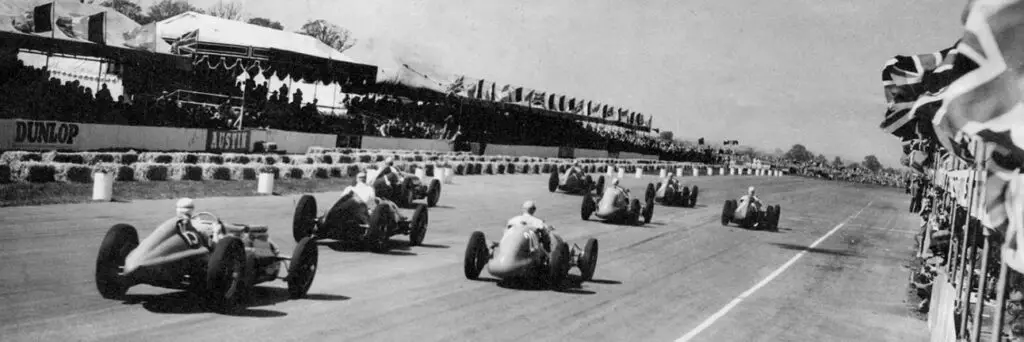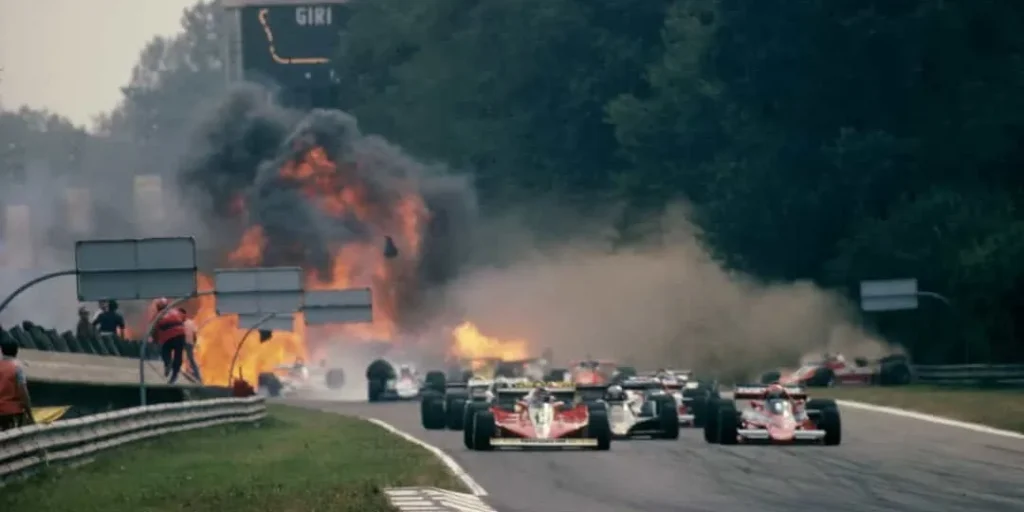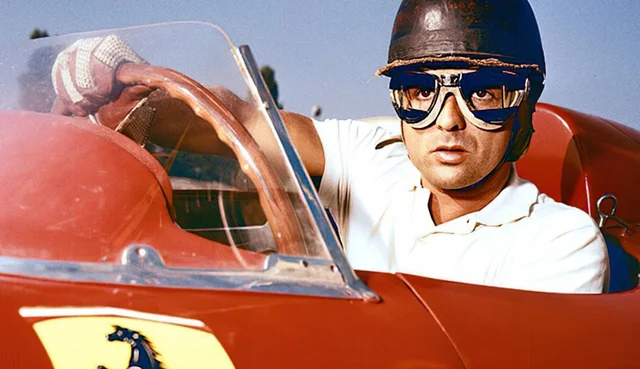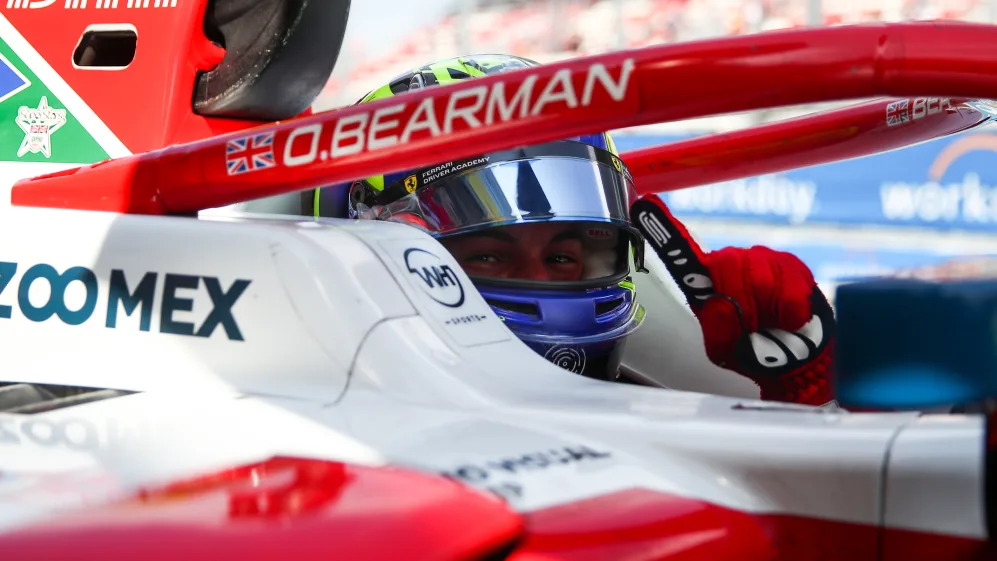Formula One is the pinnacle of motorsport, where speed, skill and technology combine to create thrilling races. But it is also a sport that involves high risks, dangers and F1 crashes, as drivers push themselves and their machines to the limit.
Over the years, Formula One has witnessed many tragic accidents that have claimed the lives of drivers, marshals and spectators. However, it has also made tremendous efforts to improve safety and prevent such tragedies from happening again.
In this article, we will look at why Formula One is safer than ever, and how the sport has changed its rules, regulations and devices to protect everyone involved. We will trace the history of safety in Formula One from 1950, when the first world championship race took place, to the present day.
Drivers are now surrounded by advanced safety features such as the halo, barriers and more.
Start your engines and lets race!
F1 Crashes – The Background To F1 Safety

Since the first F1 race in 1950 at Silverstone, 52 drivers have died while they have been in control of an F1 car.
Statistically the sport kills one driver every year in F1 Crashes.
Those are frightening statistics. Essentially out of a grid of 15 drivers one would die every year. This equated to there being a 7% chance of dying during a season. The driver has a 20% chance of dying every 5 years.

The deaths in each decade is listed in the table below.
| Decade | Number of F1 Drivers Killed In F1 Crashes |
|---|---|
| 1950’s | 15 |
| 1960’s | 13 |
| 1970’s | 12 |
| 1980’s | 4 |
| 1990’s | 2 |
| 2000’s | 2 |
| 2010’s | 3 |
| 2020’s | 0 |
Safety improvements reduce the number of fatalities from F1 Crashes.
Follow this link to see the list of drivers who have died in F1 – Link
F1 Back-Up Medical Facilities

Before the 1960s, no medical facilities were available at the circuits! The FIA introduced these In the 1960s. Despite this there was no dedicated transport and as a result it was still a logistical problem to get the of getting the medical personnel to the scene of the F1 Crashes scene.
The 1970s saw the introduction of the official F1 medical car, driven by a professional driver. A South African National – driver Alan van der Merwe is the driver; the “passenger” is a specialist trauma F1 certified doctor.
This car starts every race standing at the back of the grid with its engine running. It only moves out of the way when the race has started and the cars are safely away and have passe beyond the first turn.
The FIA Regulated Helmets And Racing Suits During The Mid-1950s

Before the mid-1950s drivers could wear what they wanted
The FIA was appointed as the body in charge of oversight. They mandated safety changes
Early helmet technology did little to protect the drivers head in an accident. They are constantly developing.
| Year | Evolution Of The Helmet |
|---|---|
| 1950s | Optional slim leather pilot helmet which provided wind protection |
| 1954 | Bell introduced the open-face hard shell helmet. |
| 1960s | goggles were introduced to protect the drivers’ eyes. |
| 1960s and 1970s | Fire retardant materials were developed |
| 1970s | Full-face helmets were developed |
| 2001 | carbon fiber helmets were launched and mandated by the FIA. They are withstand impacts from all sides and remain fire resistant. |
The FIA mandated fire resistant racing suits in the mid-1970s.
Teams Design Cars To Improve Safety
The table lists the safety developments of the cars themselves. They have helped reduce the number of the severity of the accidents
The 1950s to 1999
| Period | Modification |
|---|---|
| 1960s | External mirrors are mandatory. |
| 1970s | The Cockpit Opening was increased to enable emergency workers to extract the driver as quickly as possible. |
| 1981 | The Survival Cell (called a monocoque) was incorporated in all F1 cars. The survival cell is made from carbon fiber and Kevlar (similar to bulletproof vests) and is intended to be virtually indestructible. |
| 1994 (The year Ayrton Senna Died) | Bodywork Aerodynamic limitations. There were no standardized aero regulations teams could innovate as they wished. The FIA managed to reduce the average speeds by +- 9 seconds per lap. Pit Lane Speed Limit. The reduced pit lane speed was regulated Temporary Modifications such as extra chicanes were introduced to certain tracks. Grooved tires replaced slick tired in 1998 to reduce cornering speed. This rule has been reversed except for rain weather driving. Headrests were added. These reduce the lateral strain on a driver’s neck and assist the muscles to resist the 6g forces they regularly resist. The headrests are made from a material designed to absorb the positive and negative acceleration forces and prevent whiplash injuries. |
| 1997 | Data Recorder. These devices record the motion in an accident and shows the medical personnel how the driver was thrown around. This helps the staff the treat the driver appropriately. |
| 1999 | Wheel Tethers were mandated in 1999. These keep the wheels attached to the car. It prevents them becoming uncontrolled missiles and causing secondary damage. |
The 2000’s
| Period | Modification |
|---|---|
| 2003 | HANS (Head and Neck) Devices came into force. The device connects the driver’s helmet to a collar of carbon fiber in the vehicle (Monocoque). It stops the driver’s head and spine moving uncontrollably and hyperextending. The result is that there is less chance of the drivers suffering from closed head injuries or spinal fractures |
| 2010 | Pitstop Refueling was banned and with it the risk if fire has been substantially lessened. |
| 2014 | Accelerometers were installed in the drivers’ earpieces in 2014. It is not the same as a data recorder in that it measures the loads the car is exposed to by calculating the values that the driver experiences. The medical personnel use this to understand the cause and type of injuries and the appropriate treatment needed. |
| 2016 | A Camera is installed facing the driver and operates at an incredibly fast frame rate of 400 per second. This is used with the data recorder and accelerometer and has helped designers develop a growing knowledge base which is used for future design and regulatory changes |
| 2018 | HALO devices were installed. These have been directly responsible for saving several ofteh rivers lives. |
The FIA Introduced Racing Track Safety In The 1980s

Specialist F1 track engineers use predictive tools to assist them to predict the following
- The trajectories of cars that accidentally leave the track.
- The deceleration distances based on the car speeds at that point.
- The residual velocity (the amount of energy that remains in the structure) the car will have after hitting a barrier.
This insight has added the following modifications to F1 circuits
- Tracks are now wider – from 12 to 15 meters; This has reduced the congestion and therefore the potential of a collision.
- New barriers technology absorbs the impact of the collision and displaces the energy.
- Knowing the cars trajectory has enabled the engineers to install the barriers at preset angles. These deflect the car rather than stop it. There is more space and time to release the energy.
- Some barriers have two components. The absorption component dissipates the energy and a spring mechanism that stores and releases the un-dissipated energy.
- There are longer run-off areas that give the car enough space to decelerate before hitting the final barrier.
The FIA Permanently Introduced The Safety Car In 1993

The safety car has changed the face of F1 races. It has been in existence since 1993.
Bernd Maylander, a professional racing driver, has piloted the safety car for 21 years.
The safety car is deployedto control speeds and stop overtaking if
- There are hazards on the track.
- It is unsafe for the F1cars to go full speed
- Or because of debris, bad weather, or other obstructions.
Conclusion
In each decade since the first F1 season in 1950, F1 has worked hard to reduce the number of fatalities . F1 is raced at extremely high speeds and it is inevitable that accidents will happen from time to time.
By designing this knowledge into the sport, the FIA has been able to mitigate the risk of serious injury or death to a point were it is virtually non existent.

